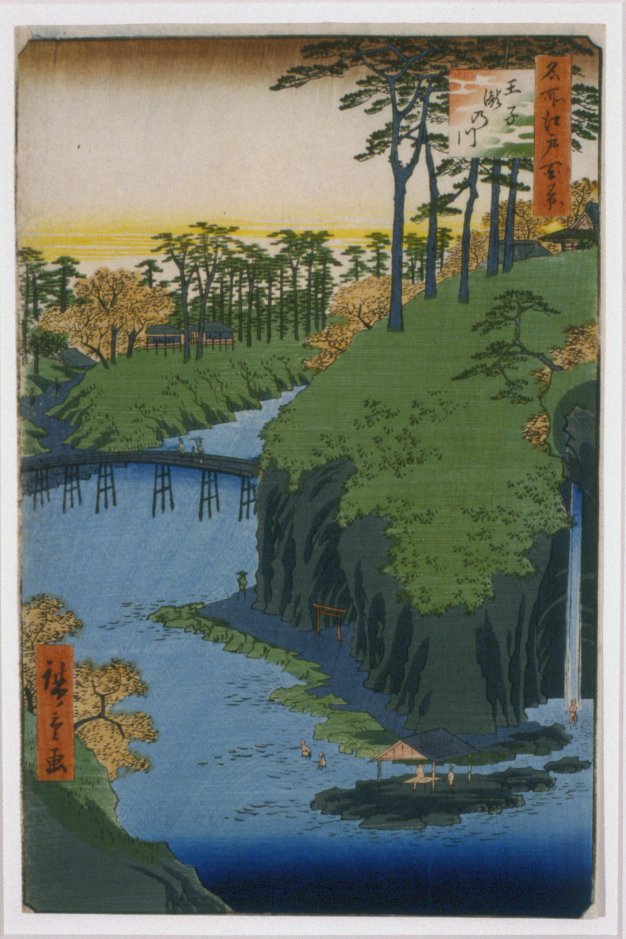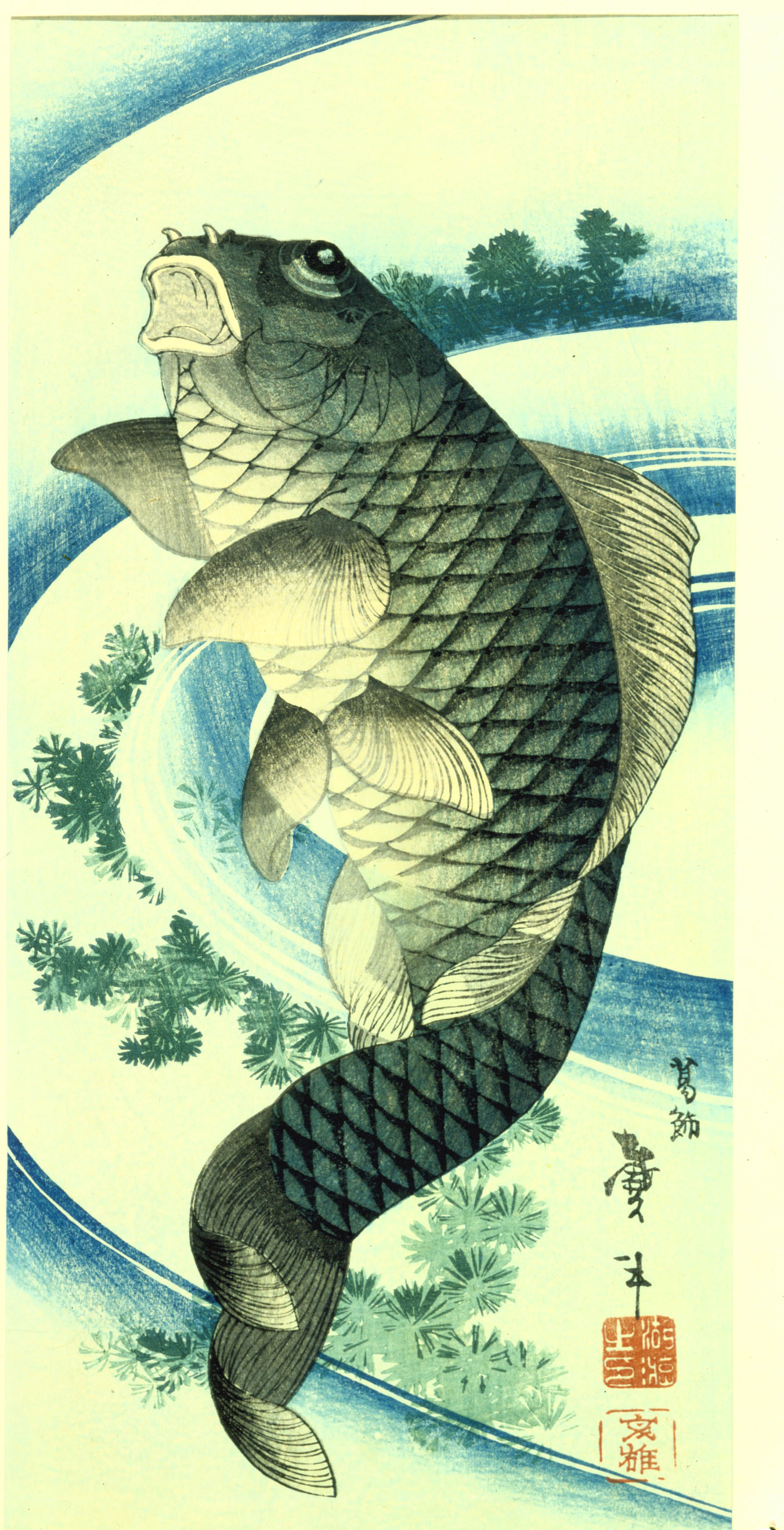
The Japanese Gallery contains examples of ukiyo-e woodblock prints from the Edo Period (1600-1868). The term ukiyo-e means “images of the floating world.” This is a reference to the theater and entertainment districts of urban Japan, especially those in Kyoto and Tokyo (then known as Edo). The most popular subjects were those of leisure and pleasure: images of courtesans and actors, of erotica and of the Kabuki theater. Later, artists would adapt the ukiyo-e style that had been honed on these subjects to the depiction of landscapes, as in Hiroshige’s album of prints, Thirty-Six Views of Fuji (c.1828-33).


At the time of their creation, ukiyo-e prints were not considered a fine art form; they were consumer goods, mostly reasonably priced, and created in multiples, rather than single original works of art. Some were inexpensive and cheaply made, but there were also private collectors who commissioned works for a particular occasion (this has been likened to having Tiffanys create custom Christmas cards). Although each print is today individually framed and displayed on the wall, during the Edo Period they would have been stored in albums similar to today’s photograph albums.

The woodblock printing process had been used in Japan as early as the 12th century, but the complex multi-color process on display here was not fully developed until the 17th century. The creation of an ukiyo-e woodblock print involved many people, not just the artist who created the image.










